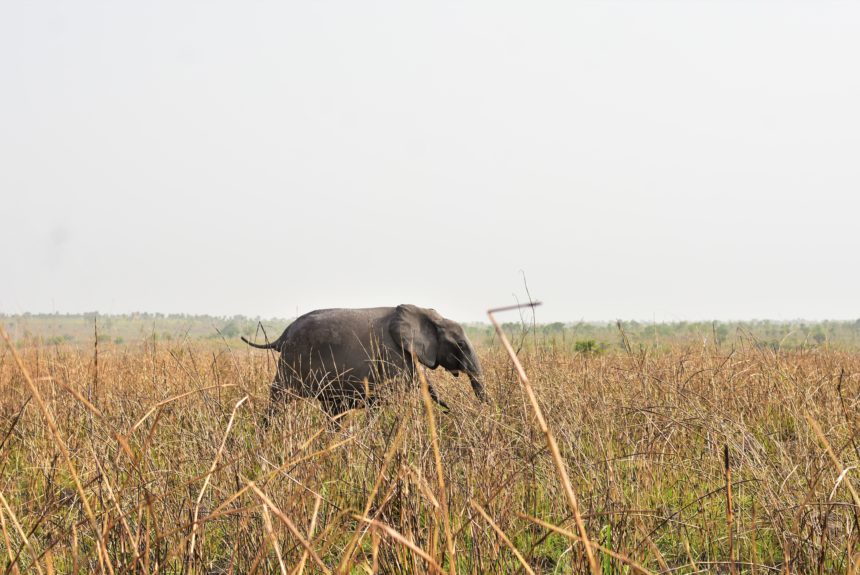In 2020 we partnered with African Parks to support genomic reference work in Central Africa including Garamba National Park in the DRC and Chinko in Central African Republic. The work is ongoing and covers a range of species from giraffes and elephants to carnivores. You can find out more about the project here.
Findings from the research will allow for correct conservation management of this extensive landscape and its varied ecosystems.
We’ve already received some feedback on the analysis of giraffe saliva and last week we were excited to receive a report outlining the initial results from elephant dung samples collected in Garamba National Park and then sent to the US for analysis by Stanford University.
The results are very interesting and show regional variations in forest elephant ecology.
“This elephant population is exhibiting behavioral plasticity and shifting their gardening efforts to a novel resource in the grasslands as opposed to their standard role in the forests, which is key to understanding their impact as ecosystem drivers within this landscape. This shift in behavior may result in this recovering elephant population playing a functional role in the restoration and maintenance of these grasslands.”
FOREST ELEPHANTS
Forest elephants are the smaller of the two African elephant species – they are listed as Critically Endangered by the IUCN. Called the ‘forest gardeners’ of Africa, forest elephants play a fundamental role in maintaining forest diversity by dispersing seeds over a very wide area.
Far less is known about forest elephants, mainly because they tend to reside in remote and hard-to-access areas, compared to savanna elephants. Previous studies from elephant collars and field montioring show that forest elephants spend most of their time in the forest browsing for fruit.They spend very little time out in the open on the plains. Forest elephants unlike the larger savanna species tend to be non-destructive.
However, results from genomic reference work challenge this thinking. A unique and rather isolated population of Garamba forest elephants is spending HALF of their time in the Garamba grasslands throughout the year, consuming large quantities of grass. They seem to be taking on the role of savanna elephants who are believed to be locally extinct.
Savanna elephants, with their larger tusks have long been the target of poachers. Combined elephant numbers in Garamba have declined from 22,000 to fewer than 1000 in 50 years.
Two elephants were poached recently, bringing an end to two and a half years without a single incident. This coincides with a large gang of poachers that are using the Mbororo cattle herders as a cover.
“Elephants engineer diverse biomes, from tropical forests to arid savannas, by creating and maintaining landscapes, altering vegetation structure and contributing to ecosystem function at various scales.”
Without savanna elephants the landscape has changed. Only 30% of the park is grassland – it used to be 80% in the 1950s. Fire management policy has also impacted the landscape.
Savanna elephants are grazers and browsers – they knock down and uproot trees, shaping the landscape as they go.
Interestingly the study, which also includes data collected from GPS elephant collars, appears to show that male forest elephants are “greater risk-takers, entering the human-altered landscape to forage on fruit.”
Credit:
Extracts taken from ‘Unique Forest elephant ecology: Gardening out on the Congo Basin grasslands’
Jordana M. Meyer
Naftali Honig
& Elizabeth A. Hadly


